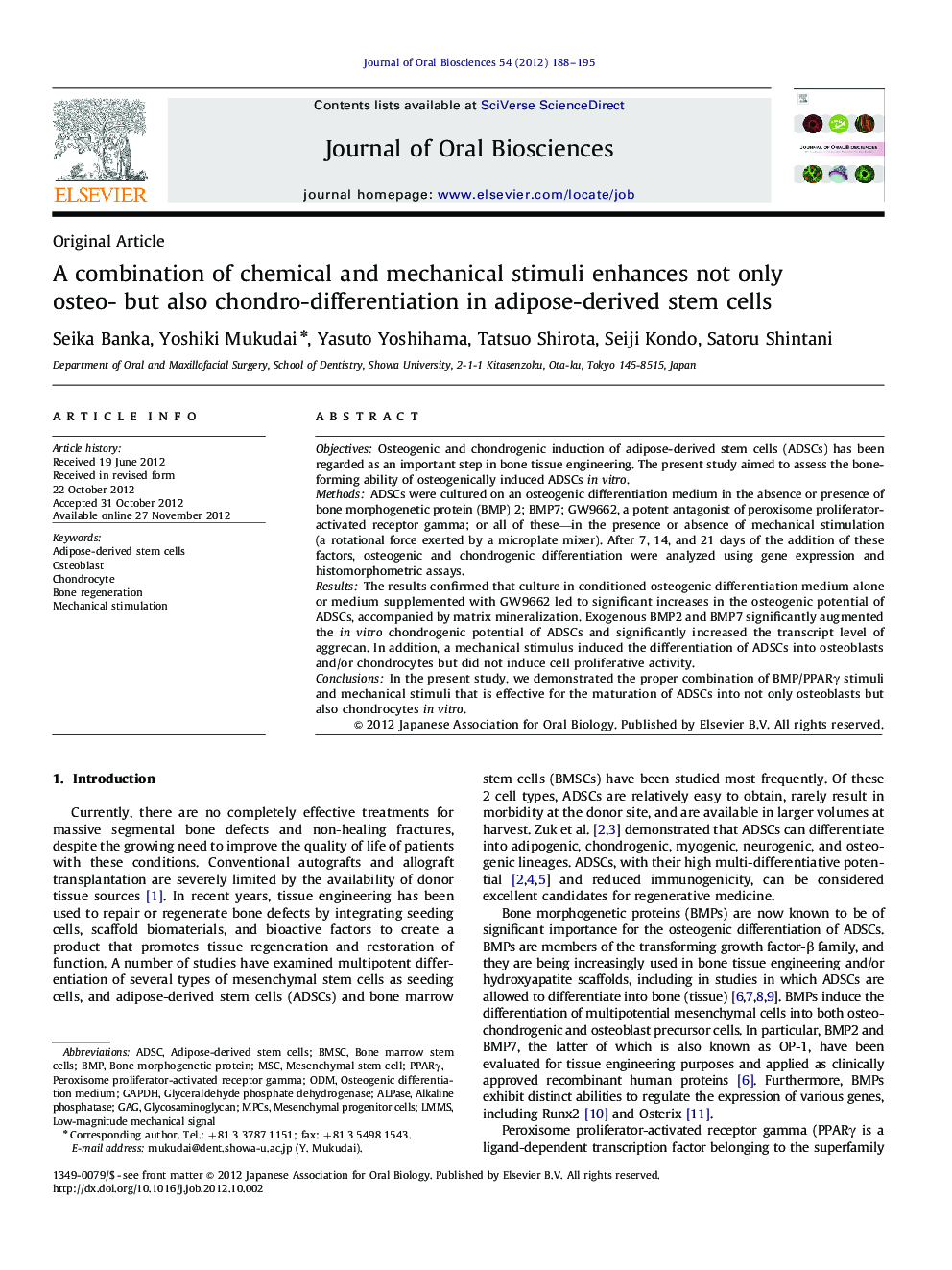| Article ID | Journal | Published Year | Pages | File Type |
|---|---|---|---|---|
| 2776861 | Journal of Oral Biosciences | 2012 | 8 Pages |
ObjectivesOsteogenic and chondrogenic induction of adipose-derived stem cells (ADSCs) has been regarded as an important step in bone tissue engineering. The present study aimed to assess the bone-forming ability of osteogenically induced ADSCs in vitro.MethodsADSCs were cultured on an osteogenic differentiation medium in the absence or presence of bone morphogenetic protein (BMP) 2; BMP7; GW9662, a potent antagonist of peroxisome proliferator-activated receptor gamma; or all of these—in the presence or absence of mechanical stimulation (a rotational force exerted by a microplate mixer). After 7, 14, and 21 days of the addition of these factors, osteogenic and chondrogenic differentiation were analyzed using gene expression and histomorphometric assays.ResultsThe results confirmed that culture in conditioned osteogenic differentiation medium alone or medium supplemented with GW9662 led to significant increases in the osteogenic potential of ADSCs, accompanied by matrix mineralization. Exogenous BMP2 and BMP7 significantly augmented the in vitro chondrogenic potential of ADSCs and significantly increased the transcript level of aggrecan. In addition, a mechanical stimulus induced the differentiation of ADSCs into osteoblasts and/or chondrocytes but did not induce cell proliferative activity.ConclusionsIn the present study, we demonstrated the proper combination of BMP/PPARγ stimuli and mechanical stimuli that is effective for the maturation of ADSCs into not only osteoblasts but also chondrocytes in vitro.
